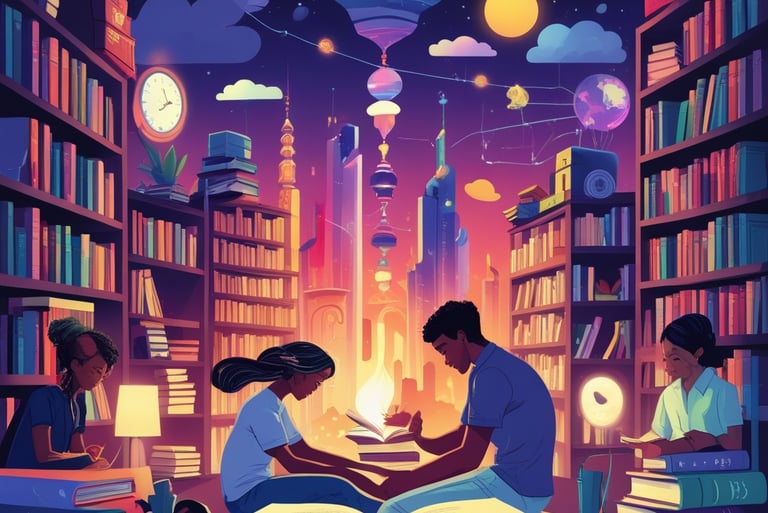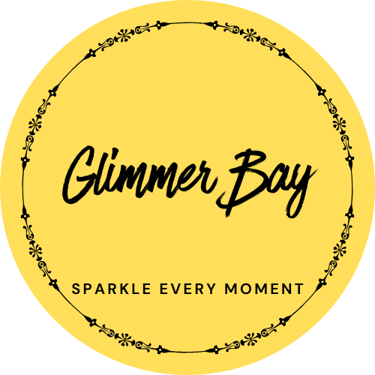The Ever-Evolving World of Words: A Dive into Current Literary Trends
The literary world is a living, breathing organism, constantly evolving and reflecting the dynamic nature of human thought, society, and technology. As we navigate through the 21st century, the ways in which stories are told, consumed, and celebrated have seen dramatic shifts. From the resurgence of certain genres to the rise of new mediums, the literary landscape is bustling with trends that reflect our ever-changing preferences. In this blog, we’ll take a closer look at some of the most exciting trends shaping the literary world today.
1.The Audiobook Renaissance
Audiobooks have witnessed an unprecedented surge in popularity over the past decade. What was once a niche market catering to a small audience has exploded into the mainstream, thanks to advancements in technology and platforms like Audible, Google Play, and Scribd.
The appeal of audiobooks lies in their ability to fit seamlessly into our busy lives. Commuters listen to gripping thrillers during their daily drives, fitness enthusiasts consume motivational self-help titles while jogging, and multitaskers tune in while tackling household chores. Audiobooks offer a hands-free, eyes-free way to immerse oneself in a story, making literature more accessible than ever.
Moreover, the art of audiobook narration has evolved into a craft of its own. Talented voice actors bring characters to life with dramatic flair, and some productions even feature full casts and soundscapes, blurring the lines between audiobooks and radio dramas. This immersive experience has attracted new listeners and rekindled the love for storytelling in audio form.
2. The Rise of Diverse Voices
Inclusivity and representation have become central to the literary conversation in recent years. Readers are seeking stories that reflect the world’s rich tapestry of cultures, identities, and experiences. This demand has paved the way for authors from marginalized communities to step into the spotlight and share their narratives.
Books like The Hate U Give by Angie Thomas, The House in the Cerulean Sea by TJ Klune, and Pachinko by Min Jin Lee have resonated deeply with audiences, not only for their compelling plots but also for their authentic portrayal of diverse characters and themes. Publishers are also increasingly prioritizing works that challenge stereotypes and celebrate intersectionality.
The focus on diversity isn’t limited to fiction. Memoirs, essays, and non-fiction titles that delve into issues of race, gender, sexuality, and identity have become staples on bestseller lists, sparking important conversations and fostering empathy among readers.
3. The Explosion of BookTok
Social media has always played a role in shaping cultural trends, but the rise of TikTok’s book-focused community, affectionately known as BookTok, has been nothing short of revolutionary. This vibrant corner of the internet is a hub for readers, creators, and authors to share recommendations, reviews, and reactions, often through creative and entertaining short videos.
BookTok has played a significant role in breathing new life into older titles. Books like Madeline Miller’s The Song of Achilles and Colleen Hoover’s It Ends with Us have seen renewed popularity, soaring up bestseller charts years after their initial release. The platform has also launched debut authors into the literary stratosphere, creating overnight sensations.
What makes BookTok so impactful is its sense of community and authenticity. Readers trust recommendations from their favorite creators, who often share heartfelt and unfiltered thoughts about the books they love (or hate). This genuine enthusiasm is contagious, driving readers back to bookstores and libraries.
4. Genre Revival: The Resurgence of Fantasy and Romance
Genres often ebb and flow in popularity, but two in particular have captured the hearts of readers in recent years: fantasy and romance.
Fantasy has experienced a renaissance, fueled in part by the success of sprawling series and adaptations like Game of Thrones, The Witcher, and Shadow and Bone. Readers are craving expansive worlds, intricate magic systems, and stories that offer an escape from reality. This trend is evident not only in traditional high fantasy but also in the rise of subgenres like urban fantasy and fairytale retellings.
Meanwhile, romance has shed its unfair stigma and embraced a new era of inclusivity and innovation. Modern romance novels are redefining love stories, with diverse characters, LGBTQ+ representation, and refreshing takes on classic tropes. The genre’s lighter, feel-good nature has also made it a comforting escape during challenging times.
5. The Popularity of Serialized Storytelling
The concept of serialized storytelling isn’t new—it dates back to the days of Charles Dickens’ weekly installments in newspapers—but it’s enjoying a revival in the digital age. Platforms like Wattpad, Radish, and Kindle Vella have transformed how stories are written, distributed, and consumed.
Serialized fiction allows readers to follow a story as it unfolds, creating a sense of anticipation and community. Writers, in turn, can receive real-time feedback and adapt their narratives to audience preferences. This trend has democratized storytelling, giving aspiring authors a platform to showcase their work and connect with readers directly.
6. The Climate Fiction Boom
As concerns about climate change intensify, so too does the literary world’s interest in addressing this pressing issue. Cli-fi, or climate fiction, has emerged as a genre that explores the impact of climate change on humanity and the planet, often through speculative or dystopian lenses.
Books like The Overstory by Richard Powers and Weather by Jenny Offill have captivated readers by weaving environmental themes into their narratives. Cli-fi serves not only as a form of entertainment but also as a call to action, prompting readers to reflect on their relationship with nature and the urgent need for sustainability.
7. The Blurring of Genres
Boundaries between genres are increasingly becoming fluid, giving rise to hybrid works that defy traditional categorization. These “genre-bending” books combine elements of multiple genres, creating unique and innovative narratives.
Take, for example, Mexican Gothic by Silvia Moreno-Garcia, which blends historical fiction, gothic horror, and psychological thriller. Or Circe by Madeline Miller, which fuses mythology, fantasy, and literary fiction. This trend reflects readers’ appetite for fresh and unexpected storytelling, as well as authors’ willingness to experiment with form and content.
8. The Shift Toward Eco-Friendly Publishing
The publishing industry is also undergoing a transformation in response to environmental concerns. Publishers and authors alike are advocating for sustainable practices, such as using recycled paper, reducing plastic packaging, and minimizing waste during production.
Readers are becoming more conscious of their consumption habits, and eco-friendly initiatives resonate with their values. Independent bookstores, too, are championing sustainability by stocking local authors, promoting e-books, and organizing community events that prioritize environmental awareness.
9. The Embrace of Visual Storytelling
Graphic novels and illustrated books are no longer confined to niche audiences—they’ve become a mainstream phenomenon. Visual storytelling offers a unique way to convey complex emotions, themes, and narratives, appealing to readers of all ages.
From memoirs like Maus by Art Spiegelman to original works like Heartstopper by Alice Oseman, graphic novels cover a wide range of genres and topics. Their visual format makes them accessible to reluctant readers and introduces new dimensions to storytelling.
10. The Growth of Audiobook Originals
Not only have audiobooks surged in popularity, but we’re also witnessing the rise of audiobook originals—stories written specifically for the audio format. These productions often include enhanced features like sound effects, musical scores, and multi-voice performances, creating a cinematic listening experience.
Audiobook originals allow writers to experiment with the medium in ways traditional books cannot, offering a fresh take on storytelling that caters to modern audiences’ preferences.
A World in Flux
The literary world is in a state of constant flux, driven by technological advancements, cultural shifts, and readers’ evolving tastes. Whether it’s the convenience of audiobooks, the authenticity of BookTok recommendations, or the creative possibilities of hybrid genres, today’s trends highlight the diverse ways in which people engage with stories.
As these trends continue to unfold, one thing remains certain: the power of literature to inspire, inform, and connect us will never fade. So, whether you’re listening to an audiobook, flipping through the pages of a novel, or exploring a serialized story online, you’re part of a vibrant and ever-changing literary universe. What trend excites you the most? Let’s celebrate the written (and spoken) word together.


